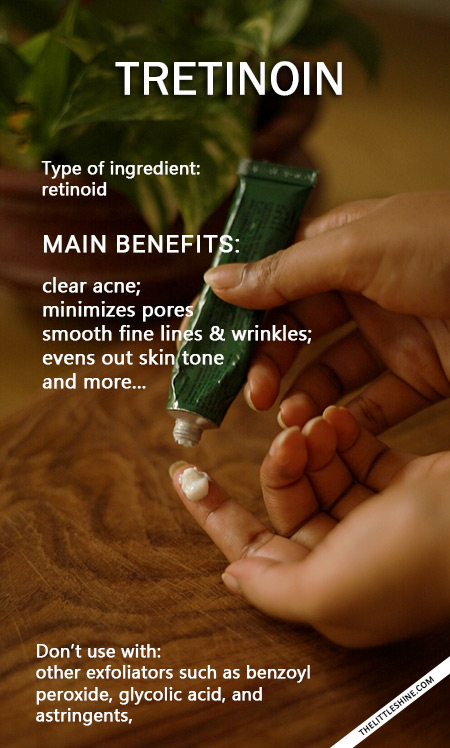A lot of people suffer from acne, of all age groups, but is most commonly seen in young people aged between 14 to 18 years of age. This is because acne most often starts off when the person reaches the age of puberty and slowly wears off over the years.

But in some people it doesn’t wear off or it gets really severe over time and they require more advanced medical treatments to reduce their acne.
One such commonly used medical treatment often used to treat acne is tretinoin.
What exactly is Tretinoin?
Tretinoin is a type of medication to treat acne that comes under the “retinoid” class of medications. It is used to decrease the severity of the acne and increase the healing process. It can also help reduce the blemished caused due to acne, on the skin. This medication works by targeting the growth of the cells in the skin.
Most often, a person will have to use topical tretinoin for a long period of time, in order to stop the spread of acne and reduce active breakouts.
Benefits of using tretinoin for the skin:
Tretinoin can be helpful to reduce acne and treat the signs of inflammation due to acne. It can also help exfoliate the skin and reduce flaking. Using tretinoin can also help prevent follicular plugging (blocking of hair follicles or pores, causing inflammation and swelling, leading to acne breakouts).
Apart from these benefits, tretinoin can also help reduce fine lines and wrinkles from appearing. It can also help treat skin that is sun damaged, improve the texture and tone of the skin and can also prevent, treat and reduce dark spots.
How do you use tretinoin for the skin to reduce acne?
Step 1: Half an hour before you go to bed at night, wash your face properly with a mild cleanser and warm water. Then dab it dry and wait for it to completely dry.
Step 2: Once your face has dried, apply a pea-sized amount of the tretinoin medication (which can come in the form of gel, lotion or cream) evenly all over your face.
Do not apply too much, just a light layer and gentle rub it in. Do not be harsh.
Step 3: Wash your hands properly once you have applied the medication.
Step 4: Wait for 20 to 30 minutes before applying a good moisturizer on your face and then go to bed.
Step 5: The next morning, wash it off using plain water at first and then using a mild cleanser and dab your face dry.
Step 6: Once your skin has dried completely, evenly apply a good moisturizer on your face (preferably a water-based one).
Note: Apply the tretinoin medication, once every two to three days or as prescribed by the doctor.
You can follow this method of application only if your doctor has not given you the recommended method and directions of use.
Side effects of using tretinoin:
- It can lighten the skin tone on areas where the tretinoin was used.
- Can cause itching and burning on the skin.
- Using tretinoin can make the skin feel warm.
- Can lead to dryness of the skin.
- It can often cause redness or can even make the skin peel off.
- If used on the skin while out in the sun, it can cause severe sun burn.
- Can be harmful for pregnant women and lactating mothers.
General Caution:
Make sure to consult a professional skin specialist or dermatologist before beginning to use tretinoin on your skin.
While some tretinoin medications require a medical prescription, some can be bought just over-the-counter. But nevertheless, medical prescriptions or guidance is always recommended, to avoid side effects.
